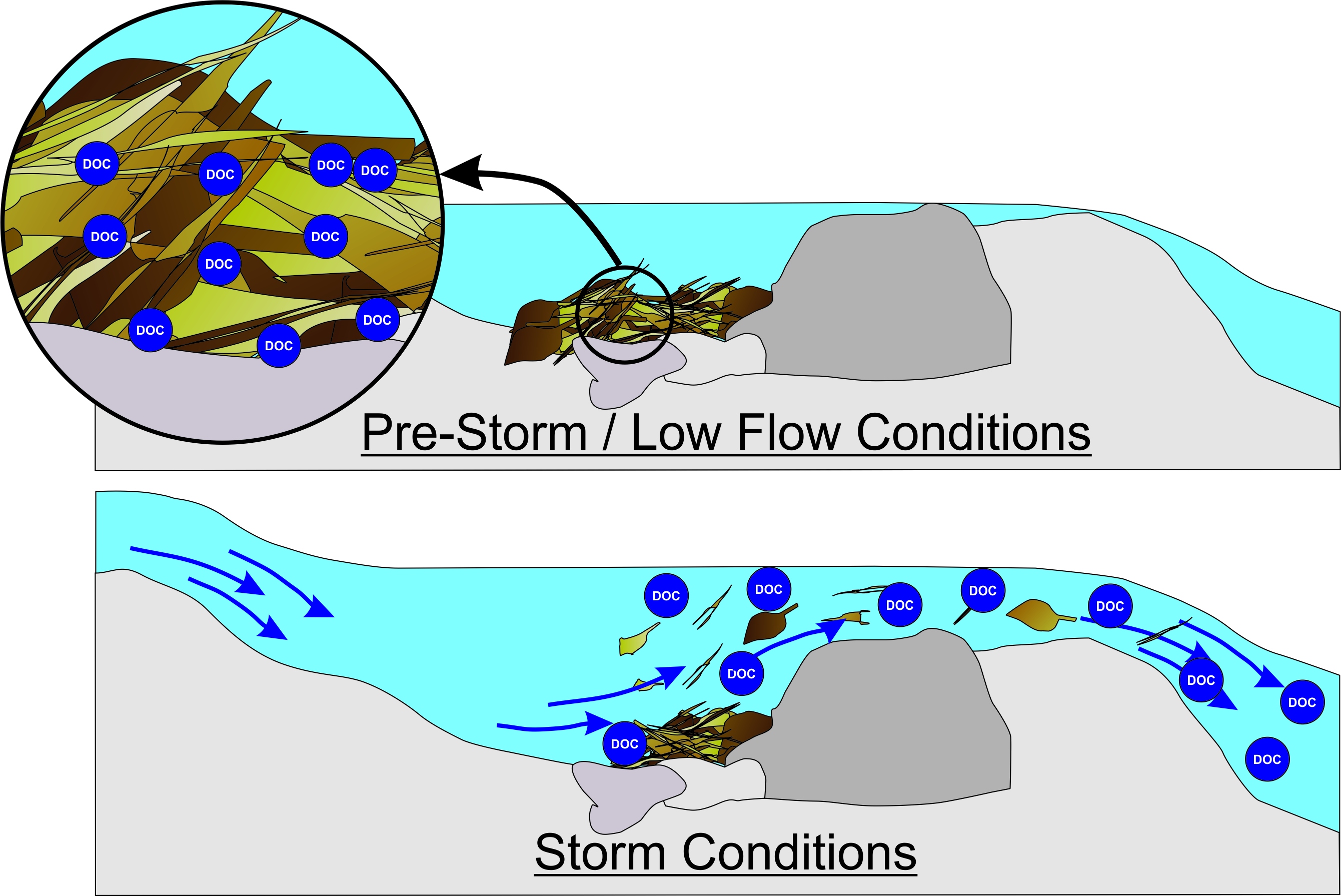Researchers Steve Wondzell and Adam Ward propose the “channel-source hypothesis” in which the stream channel itself should be considered as a potential source of DOC to stream water during storms. Data collected during a small storm in the H. J. Andrews’ Watershed 1 could not be explained by existing conceptual models of stormflow generation. Simply put, DOC concentrations in the water samples collected from both the riparian and hillslope wells were lower than the concentrations in stream water so these areas could not be the primary source of DOC to the stream. This unexpected observation forced the researchers to consider other explanations for the patterns we observed in the stream chemistry. The “channel source hypothesis” is based on the well-known behavior of streams. Organic matter from litter fall or in-stream primary production can be stored in dead zones within the wetted stream channel under low-flow conditions. Leaching and microbial processes generate DOC within the organic matter. As water depth and flow velocity increase during the rising leg of the storm hydrograph, organic matter can be scoured out of dead zones, releasing the accumulated DOC into the active stream channel. The channel-source hypothesis does not replace existing conceptual models. Instead, it adds another potential mechanism that may explain DOC dynamics observed in streams during storms. The channel-source hypothesis has substantial implications for catchment studies examining sources of DOC in stream water or using DOC as a tracer to determine the locations of, and proportional contributions of, different source areas for streamflow generation.
Full paper: Wondzell and Ward. 2022. The Channel Source Hypothesis: Empirical Evidence for In-Channel Sourcing of Dissolved Organic Carbon to Explain Hysteresis in a Headwater Mountain Stream. Hydrological Processes, Vol 36, Issue 5. http://dx.doi.org/10.1002/hyp.14570

